What Is Biophilic Interior Design? I'm an Actual Biophilic Designer, and This Is How to Apply It to Your Home
Marianna Popejoy explains the core principles of this practice and the easy ways you can bring its benefits to your interior design
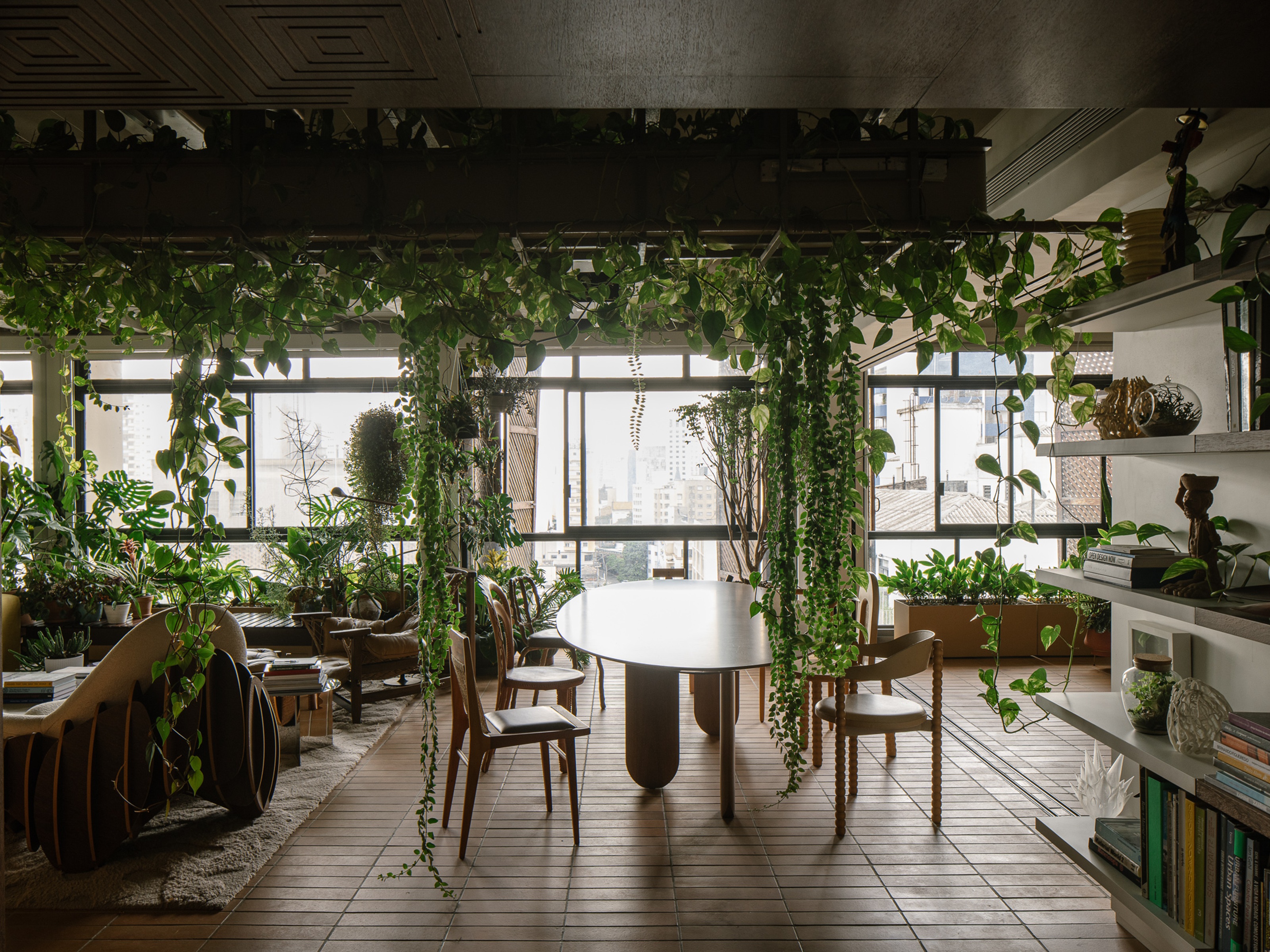
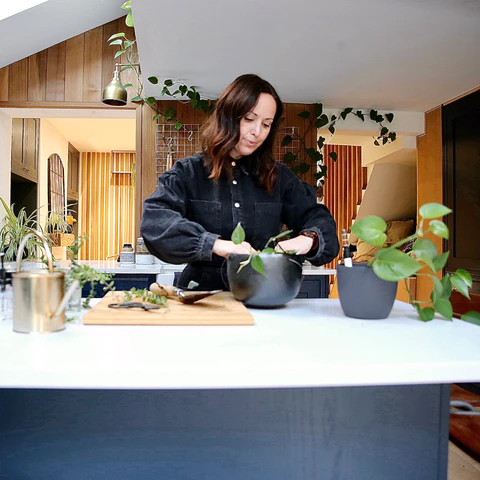
If I had a time machine, I might go back in time to 1996 and tell my younger self that overplucking your eyebrows to look more like Gwen Stefani is definitely not a good idea and that it would have lasting repercussions.
But, I might also go back to 1984 to have a cup of tea with biologist Edward O. Wilson and ask him if he wouldn’t mind reconsidering the name of his book Biophilia, and choose something a little friendlier sounding. That conversation would mean, some forty years in the future, I wouldn't have to be asked time and time again to use an alternative to biophilic interior design due to it sounding a bit scary and unrelatable.
But I’m here to demystify biophilic design and make it much more palatable for everyone. Let’s start by getting out our knives and forks and carving up the word ‘biophilia’. It's made up from the Greek 'philia' meaning 'love of’ and ‘bio’ meaning ‘life’. Its literal translation being ‘love of life’ and who wouldn’t like a slice of that pie?
I first stumbled across the word ‘biophilia’, almost by accident, after being asked by various journalists if they could feature our home as they felt that it was a great example of biophilic interior design. The more I learned about the concept, the more I recognized how many of the core principles of biophilic design we had incorporated into our home without even realizing it. Proof that the desire to connect the spaces we live in to nature really is intrinsic to us.
In short, biophilic design is about creating healing environments that support you from the minute you step through the door by taking all of the good bits from the great outdoors and inviting them in so that we can function as nature intended, while injecting a bit of soul into our homes in the process.

Marianna Popejoy is an interior designer specializing in biophilic design. She’s worked on numerous projects from outdoor bathrooms and garden layouts, to jungle-inspired interiors. Her work and home have been featured globally by Architectural Digest and Apartment Therapy, and her recently published book At Home with Nature is aimed at helping people make realistic, achievable changes to their homes by incorporating elements from nature.
So, What Is Biophilic Interior Design?
Biophiloc design transcends interior design trends — it sees beyond pistachio being the new millennial pink. Its main aim is to foster well-being, improve cognitive function, and enhance your overall quality of life. At the heart of this philosophy lie six core principles with over 70 ‘belief systems’ within that, formulated by Stephen Kellert, that provide a framework for creating spaces that resonate with our inherent affinity for the natural world.
Of course, it’s not always going to be possible to incorporate everything within the space that you have, so I’ve put together a list including the main fundamentals of biophilic interior design that you can use to get you off the starting blocks. You may have already ticked some of them off, in which case you will get a well-earned head start on creating the home sanctuary of your dreams.
Be The First To Know
The Livingetc newsletters are your inside source for what’s shaping interiors now - and what’s next. Discover trend forecasts, smart style ideas, and curated shopping inspiration that brings design to life. Subscribe today and stay ahead of the curve.
From color psychology in interior design that can boost your productivity, to the use of natural materials that aid a good night's sleep, you’re going to want to open up a brand new note on your smartphone for this one.
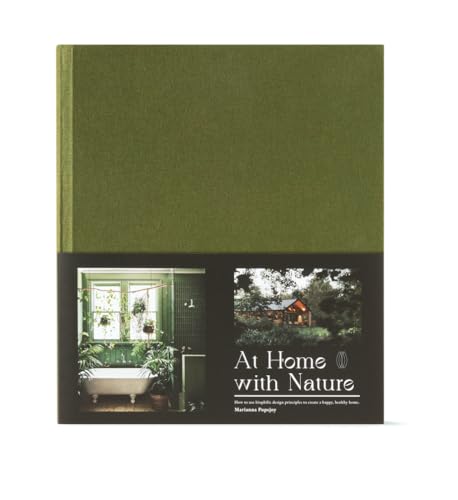
Marianna's book, At Home With Nature, is the perfect further reading on your biophilic interior design journey.
Lighting
Natural light is featured heavily in the principles of biophilia, it will help you to feel more energized by day and sleep better at night.
Our circadian rhythms are controlled by a portion of our brains called the hypothalamus. It does a lot more than just tell our bodies when to go to sleep and when to wake up, though — it also regulates the release of hormones that help the body stay energetic and alert during the daytime, and have a healthy and restful sleep at night.
Exposure to natural light serves to balance our hormonal levels of serotonin — a natural mood booster, and inhibits the production of melatonin, which regulates sleep.
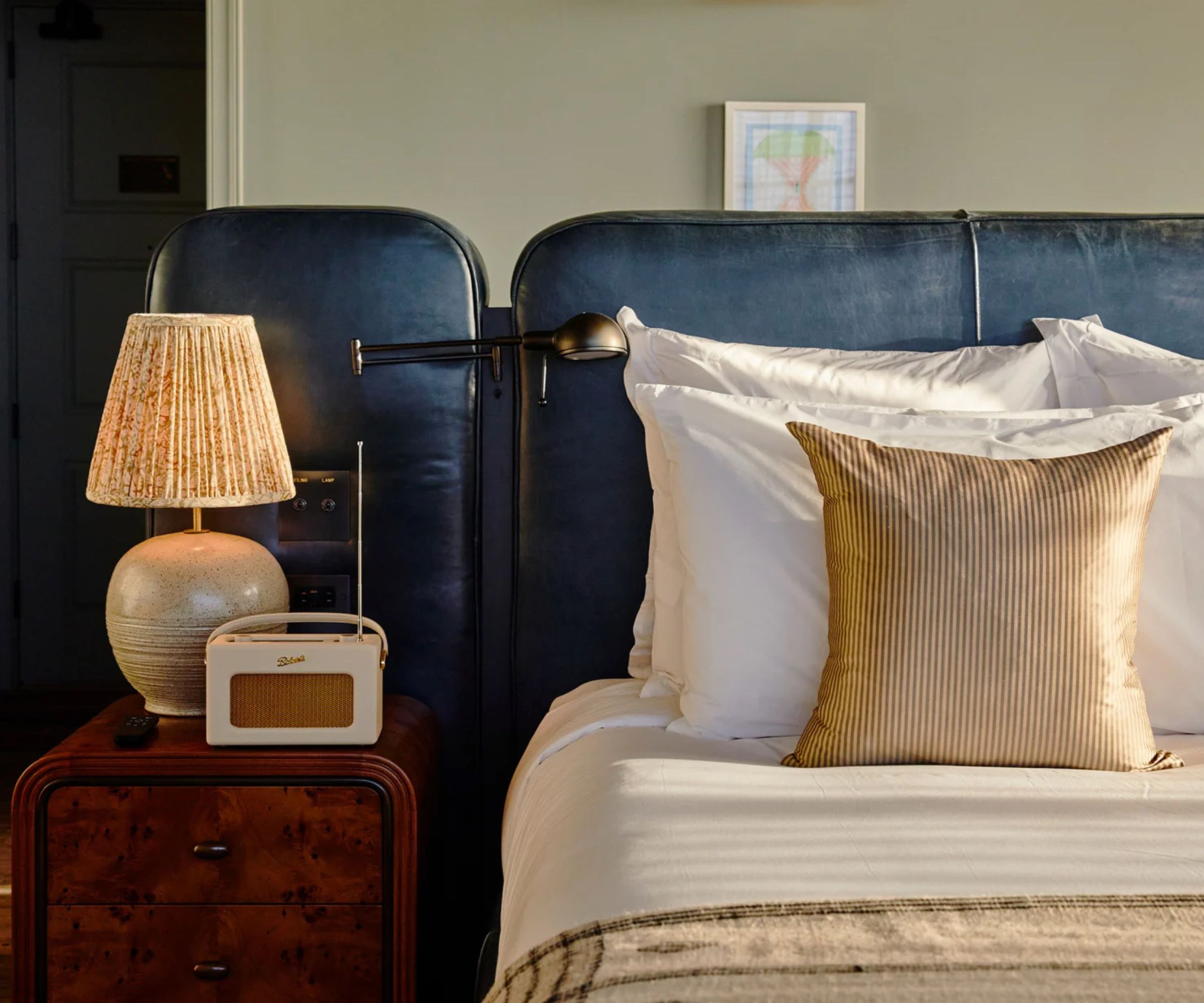
Plenty of layered levels of lighting will make a bedroom easier to unwind for the night in.
If any of you have ever struggled with insomnia, you’ll know how important getting a good night’s sleep is to our mental and physical health, and wellbeing. Equally, we all strive to remain as sharp and as focused as possible throughout the day so that we can perform at our best.
There are even architectural practices that help increase and improve natural light in your home called daylighting, but it's not the only way to make changes. Make the most out of the natural light you have by removing heavy curtains and replacing them with a sheer cafe curtain if privacy is an issue, or opt for a roller blind fitted above the recess of your window instead of shutters to let in more of that precious natural light in north-facing spaces.
Use mirrors and reflective surfaces such as glass pendants or marble side tables to bounce the sunlight around the room. Or choose a tile with a polished surface as opposed to a matte one if you want to feel invigorated during your morning shower.

Make sure everything has its place to avoid clutter.
And, don’t forget to let your rooms breathe, now is the time to have that clear out that you’ve been putting off. Excess clutter is a big old light sponge. Give your best bits the time to shine, and banish the bits best hidden away to baskets and storage boxes where they can be easily pulled out and accessed whenever you need them. A clean and decluttered surface will feel a lot lighter and brighter, not to mention the extra space that it will clear out in your mind.
Biophilic Dynamic Lighting
What can we do in those spaces where natural light is limited or, in some cases, completely nonexistent? Well, first of all, we must understand what biophilic dynamic lighting (sometimes called human-centric lighting) is and how it behaves. As what we’re trying to replicate is natural light, we’ll use that as our example. Natural light is dynamic, moving throughout the day, changing in intensity, color, and distribution, leaving ever-changing patterns, pools of light, and dappled shade as it goes.
Contrary to what most British houses built in the last 100 years will have you believe, we can not rely on one solitary ceiling light in a room to do all of these things. We need to layer our lighting and make it as changeable as possible to suit whatever our needs are in that particular moment.

Lighting that can change temperature throughout the day is an effective way to flatter your circadian rhythm.
Natural light varies in color, too, from the brighter, cooler-colored light during the daytime to the warmer, dimmer light in the evening. Using cool blue tone lightbulbs in the day helps to wake us up and make us feel more alert, just like natural daylight does, so they’re perfect to use in a work space, as task lighting, or anywhere in your home that has limited to no natural light. Whereas warm, softer lighting is much more soothing, and similar to candlelight, it’s the most flattering against the skin. It relaxes you and gets you into a much calmer headspace.
Break your lighting design up into three sections.
Overhead, which is just an excuse for creating a statement on the ceiling as far as I’m concerned, and should never really be switched on unless you’ve lost an earring.
Task lighting, such as wall lights, countertop lighting, anglepoise, and spotlights, for functionality.
And finally, your mood lighting to create your atmosphere, which is, of course, our beloved lamps, cabinet lighting, and indirect recessed lights that are just there to provide a warm glow and illuminate pockets of interest around the home as accent lighting.
Try recreating a soothing, indirect light, similar to what you might experience in the forest, by positioning programmable LED strip lights behind houseplant foliage to mimic natural shadow play and pools of light between the leaves, reminiscent of how it would appear in nature.
Natural Minerals
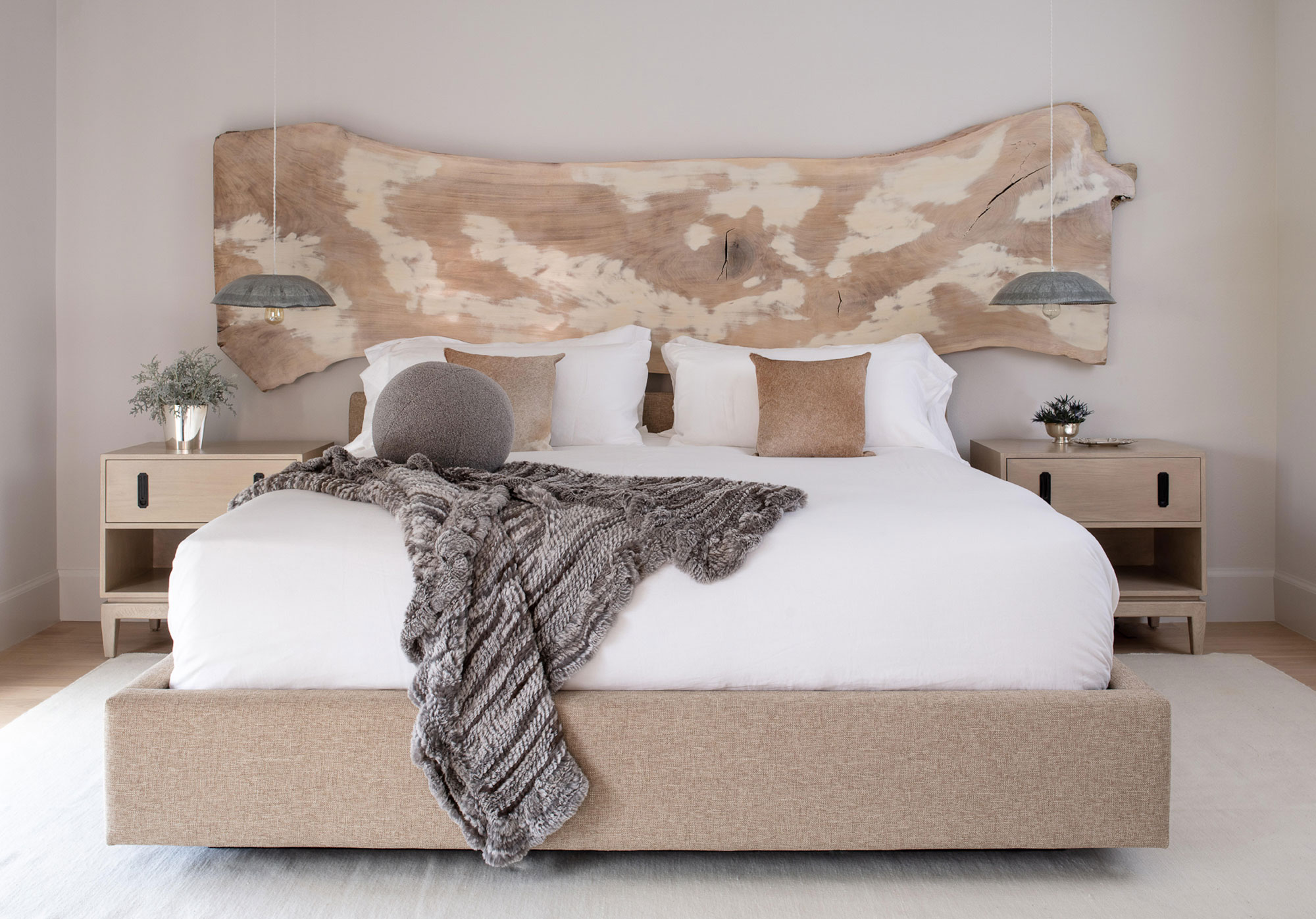
Natural timber has particular benefits in a bedroom, according to biophilic design principles.
Natural materials, as well as being the better option for a more sustainable home, can also benefit our general health and wellbeing. In fact, studies have shown that bringing natural materials into our homes and workplaces not only makes us feel more connected to our natural environment, but they can actually have an impact on our physicality too. For example, one study found that people who worked in offices with real timber furniture had lower heart rates and blood pressure than those who worked in offices with synthetic furniture.
With that in mind, choose natural materials and reclaimed wooden furniture where you can. Studies have shown that sleeping in a solid timber bed, for example, reduces blood pressure and anxiety, and improves a person’s emotional state and relaxation levels.
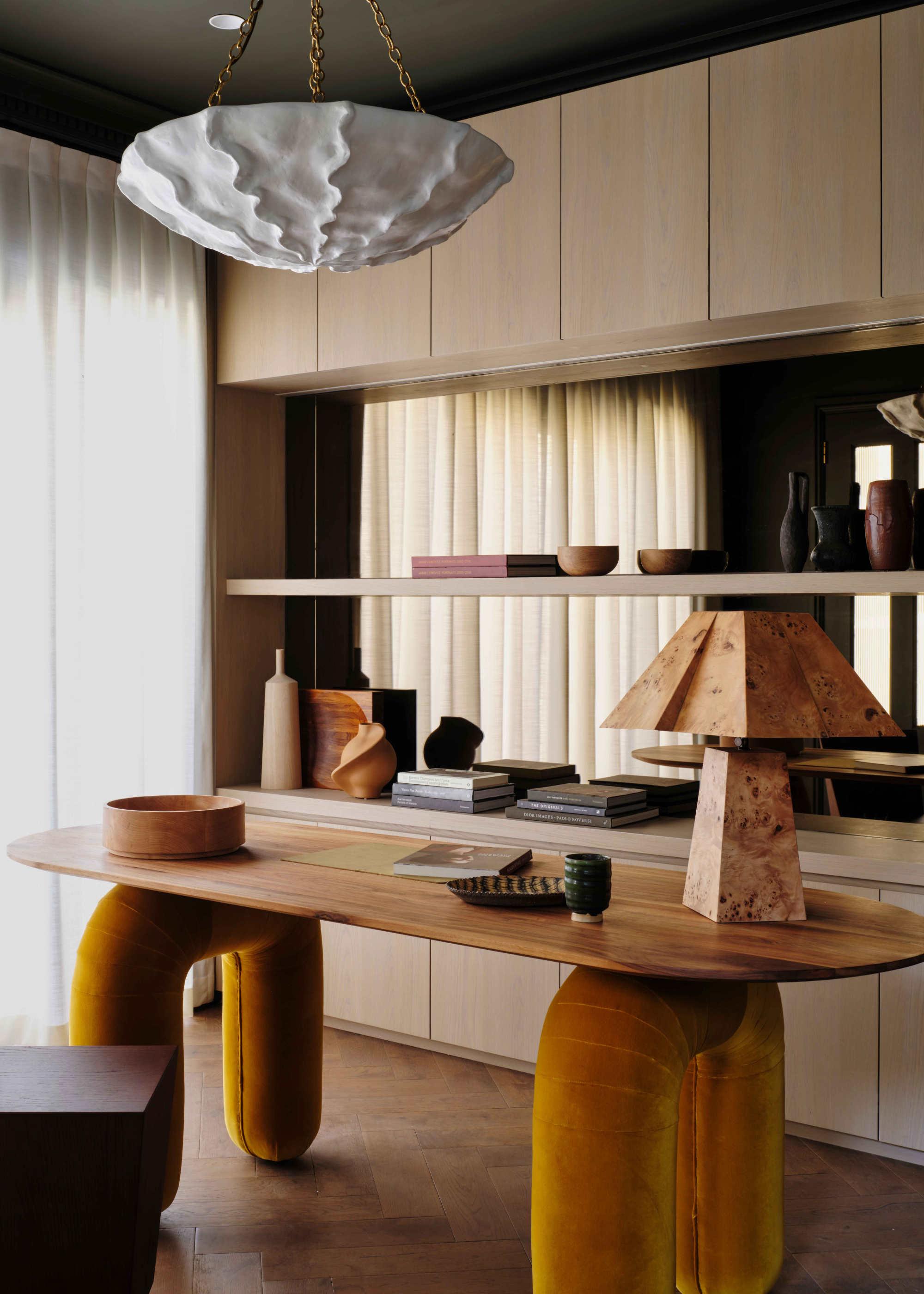
Choose solid timber for furniture you spend a lot of 'hands-on' time with.
Introducing timber touch points such as a dining table or some wooden tableware to your scheme is also a great way of bringing in the tactile benefits of being in contact with wood, without having to splash out on fitting out a room with oak flooring. There are a number of stylish, natural alternatives to synthetic floor coverings too, such as sisal, seagrass, and cork flooring, which are practical, durable, and low maintenance, not to mention being warm and tactile underfoot.
There is so much more research going into off-gassing from synthetic and veneer furniture, and the damage caused by the chemicals that artificial materials give off in the home, which is just another reason to go natural.
Air Quality
Indoor pollutants can be found in many building materials and numerous household products. You can reduce the amount of harmful chemicals within the home by using natural, untreated materials and household products where possible.
Paint is arguably the most commonly used and largest surface application in our homes, so that is a great place to start. There are plenty of eco paints and sustainably-produced lime, clay, and chalk paints on the market. Lime paint is a breathable, mould and bacteria-resistant paint, making it extremely suitable for application in a kitchen and bathroom, for example. It has an imperfect and tactile finish, giving it a more natural, stoney feel and, of course, it doesn't emit the same chemical odor or toxins as some man-made paints.
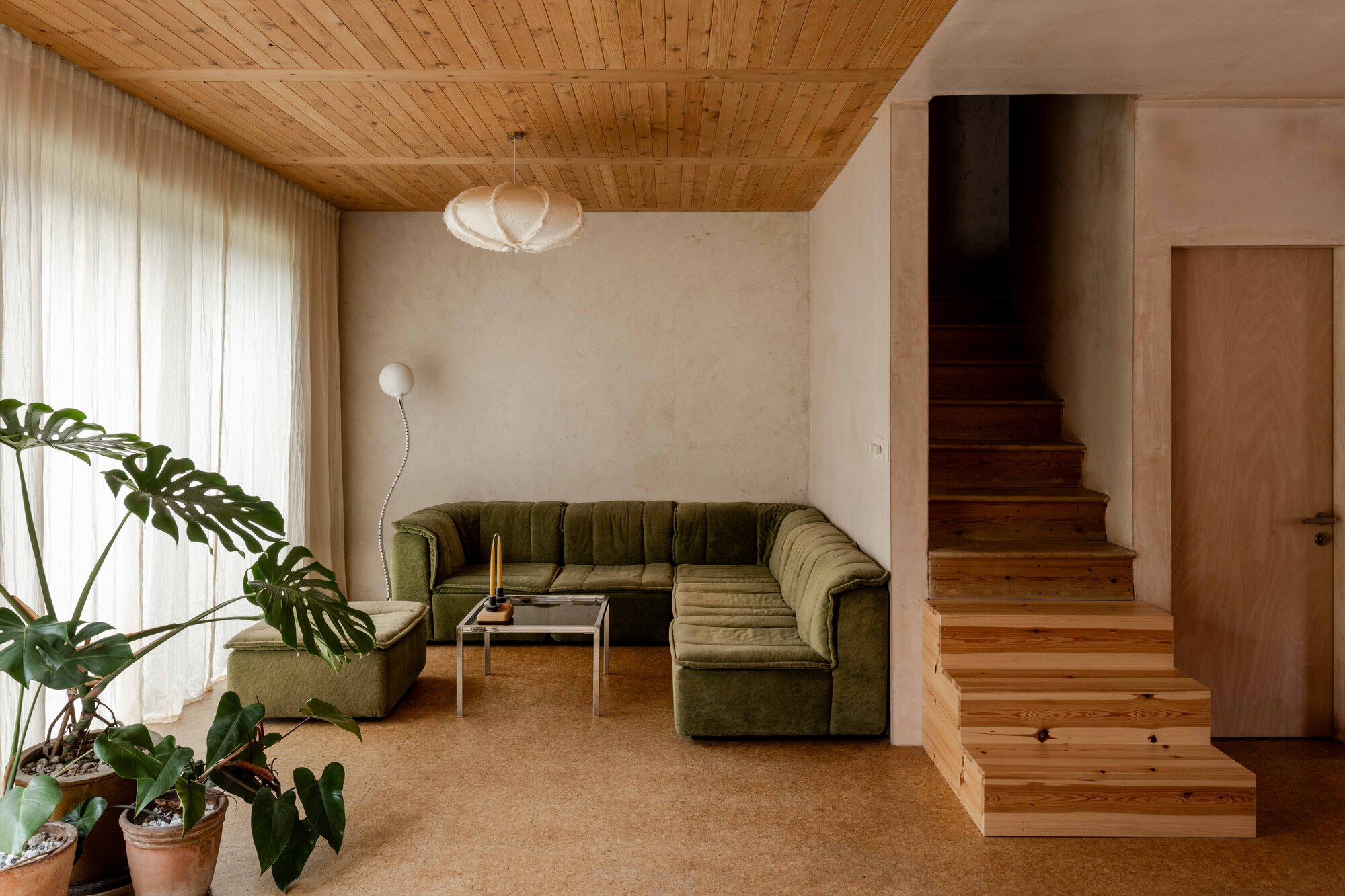
Lime paint is Marianna's top pick for improving your home's air quality.
A practical and completely free way to keep your air circulating and fresh within the home is to open up your windows every day. Whatever the weather. Fresh air will help you feel more alert and focused.
If you’re in a windowless space, invest in the benefits of a dehumidifier — it will improve air quality and reduce allergies that thrive in humidity. A desk fan will also help you to keep the air circulating and cool. It can reduce odors and stop the space from feeling stuffy. Both are great ways of blocking out traffic or construction noise in the same way as playing celestial white noise and having the fan oscillating will give you that natural feeling of an intermittent breeze.
Color Psychology
Let's explore colour psychology. While there is a lot of talk around color trends and what’s ‘hot’ and what’s ‘not’, most of us are probably old enough to have been lured in by a color trend or two only to live with it for a few months and realize that it gives you the major ick. And if you’re not old enough to have lived that experience, then allow me to save you the money and the blood, sweat, and tears that it will take you to paint over it.
Biophilic interior design takes a much more intuitive approach to choosing color for your home. Before deciding on a scheme for a room, try thinking about the room's purpose and how you want to feel while you're living in it. Do you want to feel inspired and productive, or do you want to feel relaxed and comfortable? Answering these questions and applying some color psychology theories could help you to get the most out of your space.
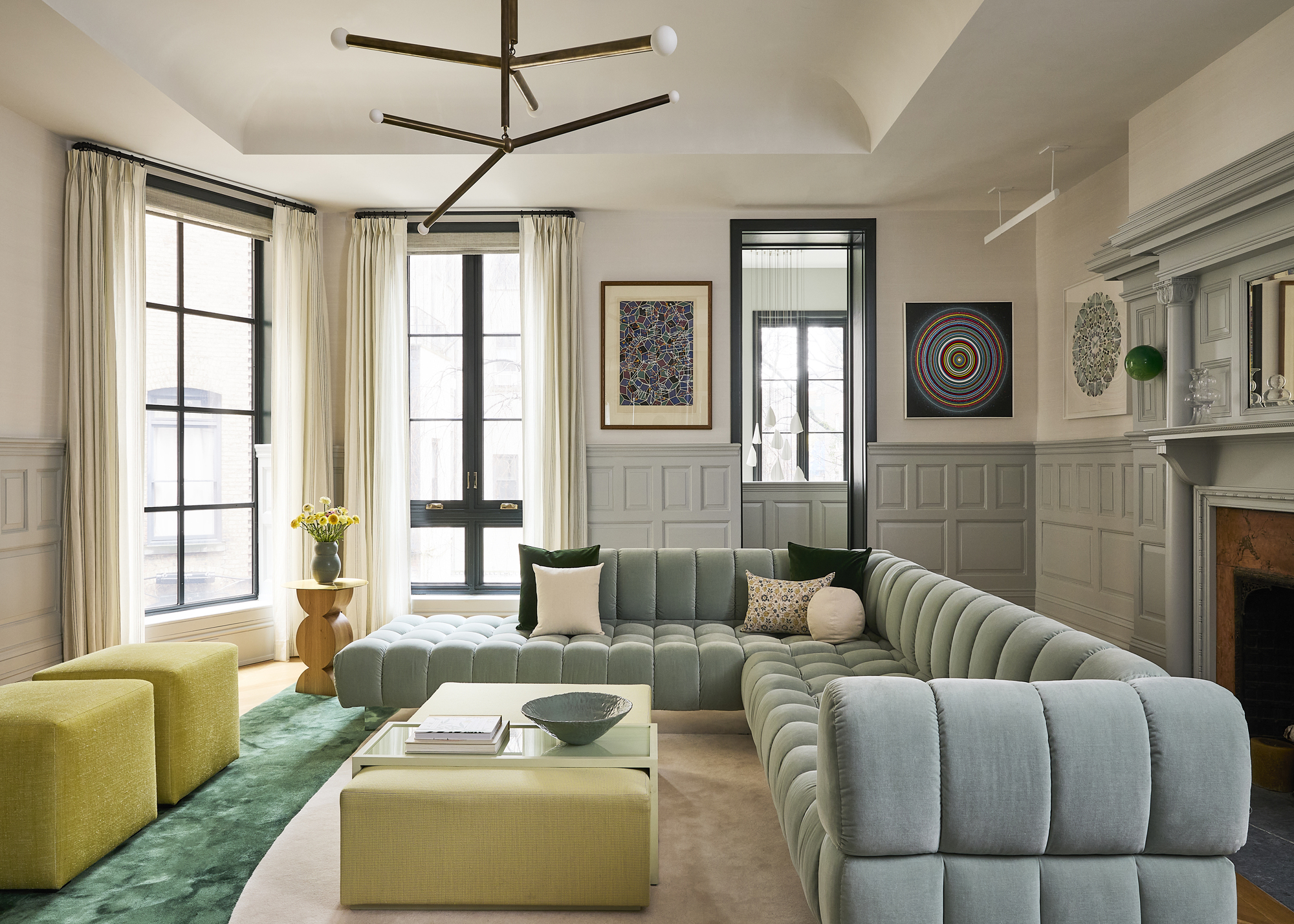
The most effective colors to choose from a room are the ones that make you feel good, too.
If I asked you to think of one place where you feel completely calm and relaxed, you are probably going to imagine yourself lying on an empty beach, next to the gentle lapping waves of the crystal blue sea. You may even think of yourself forest bathing in the soft, dappled light of a lush green trees. You might feel your most creatively inspired by the vibrant colors of wildflowers peppering our countryside during summer months.
Asking yourself how you want to feel within the space can help you to narrow down the colors in your environment that align with that. The colors from nature that make you feel calm would be the colors that you’d aim to use in your bedroom design, or in a cozy snug that you retreat to in the evening. You would want to take a different approach when deciding on a color palette for your workspace or a playroom, for example. That’s not to say that you can’t use the same color in both spaces; you just might want to consider the vibrancy of the tone.
Indoor Vegetation
I believe that you can breathe life into even the most soulless of spaces with the introduction of a good old trusty houseplant. Not only do these leafy, splashes of green help to make a space feel better, they can make you feel physically better.
Keeping indoor plants can help to promote a healthy indoor climate, increasing humidity and moisture in dry air, and even reducing the allergens that cause complaints such as irritated eyes, headaches, sore throats, and tiredness.

Lush indoor forests will change the outlook of your space.
Office environments that have incorporated plants into their work spaces have seen a noticeable decrease in absence due to illness, and even an increase in productivity. There is no question that living and working in a green environment has a positive effect on our general health and wellbeing.
Being around vegetation and greenery relaxes us and reduces stress levels, this is more than likely due to our primitive need to be close to a food and water source. The very idea that we won’t need to travel too far to find our next meal means that we can channel that energy elsewhere, such as productivity, creativity, sleeping well, restoration, and healing.
A simple way to give the impression of being surrounded by plants and foliage, without having to break the bank and invest in a living wall, is to ensure that you can see plants at every level, from the ground up. Try to include some on the floor (at base level), have a couple on side tables or shelves, and then hang one or two up high from the ceiling or invest in a statement indoor tree so that you can always see them in your line of sight, whether you’re standing or seated. This will draw the eyes around the room to the various splashes of greenery and create the feeling of being immersed in nature.
Views and Vistas
Biophilia tells us that space with a good visual connection to nature feels whole; it grabs our attention and can be rejuvenating and calming. It can convey a sense of time, weather, and existing among other living things. It’s the reason why hotels can and do charge a premium for a room with a view. Studies have shown that sunlight and exposure to nature can improve our perceptions of pain levels and can even speed up recovery times in a hospital environment.
If you’re lucky enough to have a green view out of your window, consider where you place your furniture. I know the temptation is to put your sofa or armchair in front of the window so that you can get a better view of the TV but, that shot of blue light into your retinas is more likely to raise your cortisol levels rather than lower them in the way that a view out to nature will. Consider building a window seat into the recess instead so that you can gaze out and soak in all of that nourishing natural light.
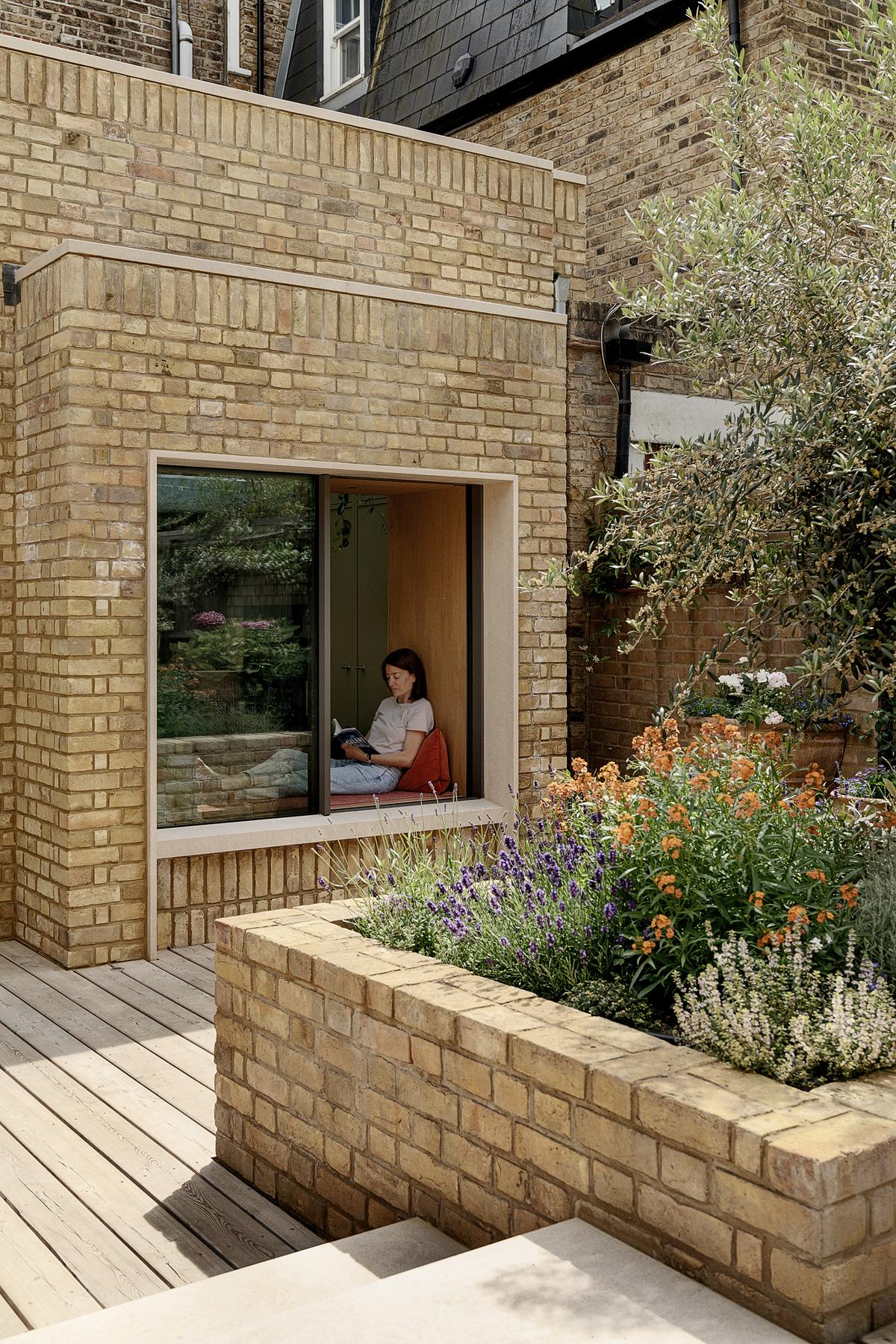
A window seat gives you the best option for seating in the house from a biophilic interior design perspective.
But if the view outside of your windows isn’t a positive one, consider concealing it with a reeded glass or a sheer curtain so that the light can still flood in.
Then try bringing some plants into the foreground to help give that illusion that there is still nature and vegetation beyond. And if a wall-mounted TV is your only option for a focal point. then consider one with a function where scenic art can be uploaded onto it when it’s not in use. Something like Samsung's The Frame is a good choice.

Remember to choose a natural wall art for your TV when you're not using it.
Natural Shapes and Forms
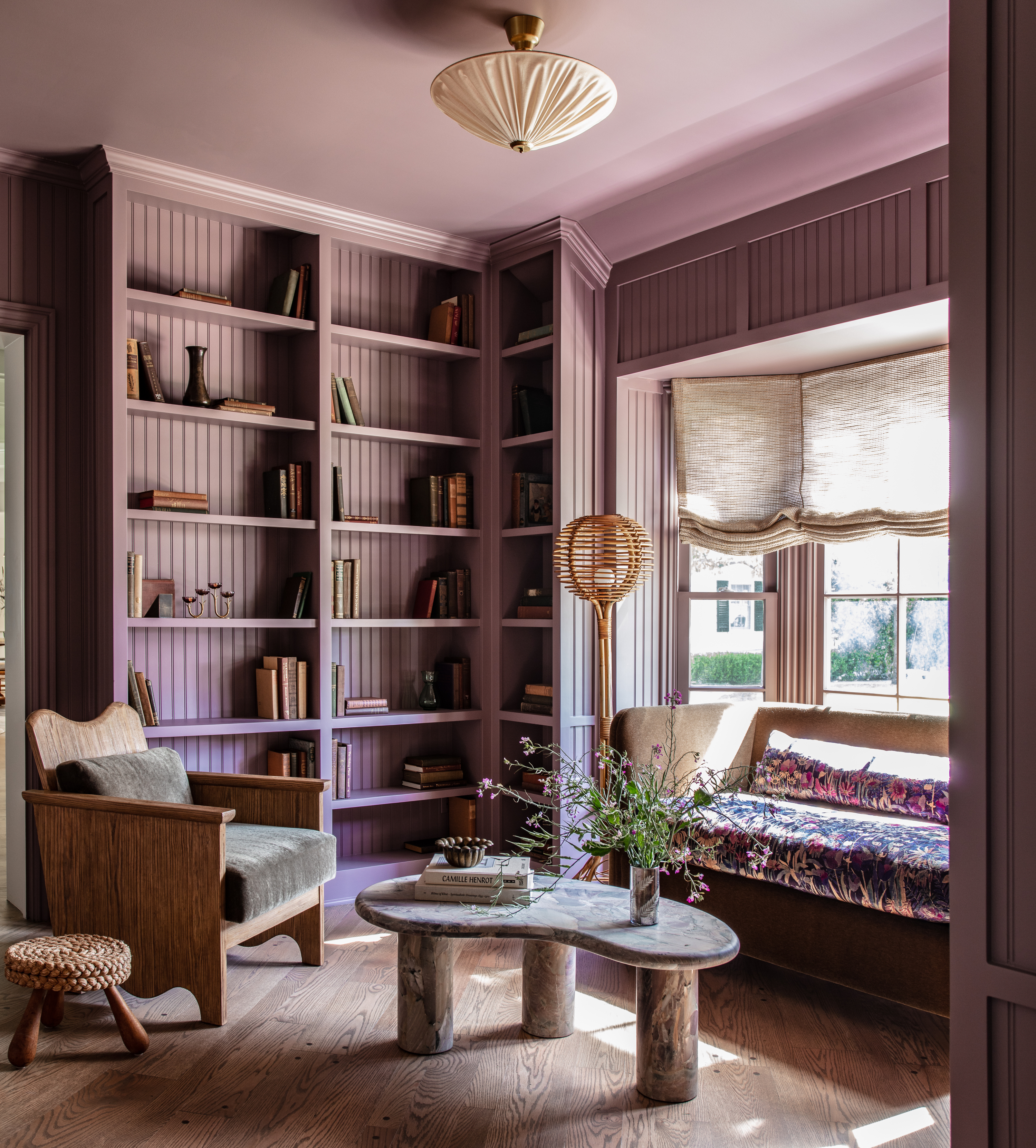
Soft edges and floral designs make this space a double-hit of biophilic interior design style.
Although we want to avoid all unnecessary visual noise in our homes and workspaces, there are some visual complexities that can trigger much more positive responses in our brains.
Botanical patterns are showing no sign of going out of style any time soon, and you can find them everywhere from wallpapers and soft furnishings to antique tapestries. But if you want to bring in those associations to the great outdoors in a less obvious and more subtle way, then you can achieve that through the introduction of a wavy organic-shaped mirror or a rounded pebble-shaped coffee table for example. The addition of a frilly edge to your pillow cases that dress the bed would be a nice little nod to movement in water if that is an environment that makes you feel calm and at ease.
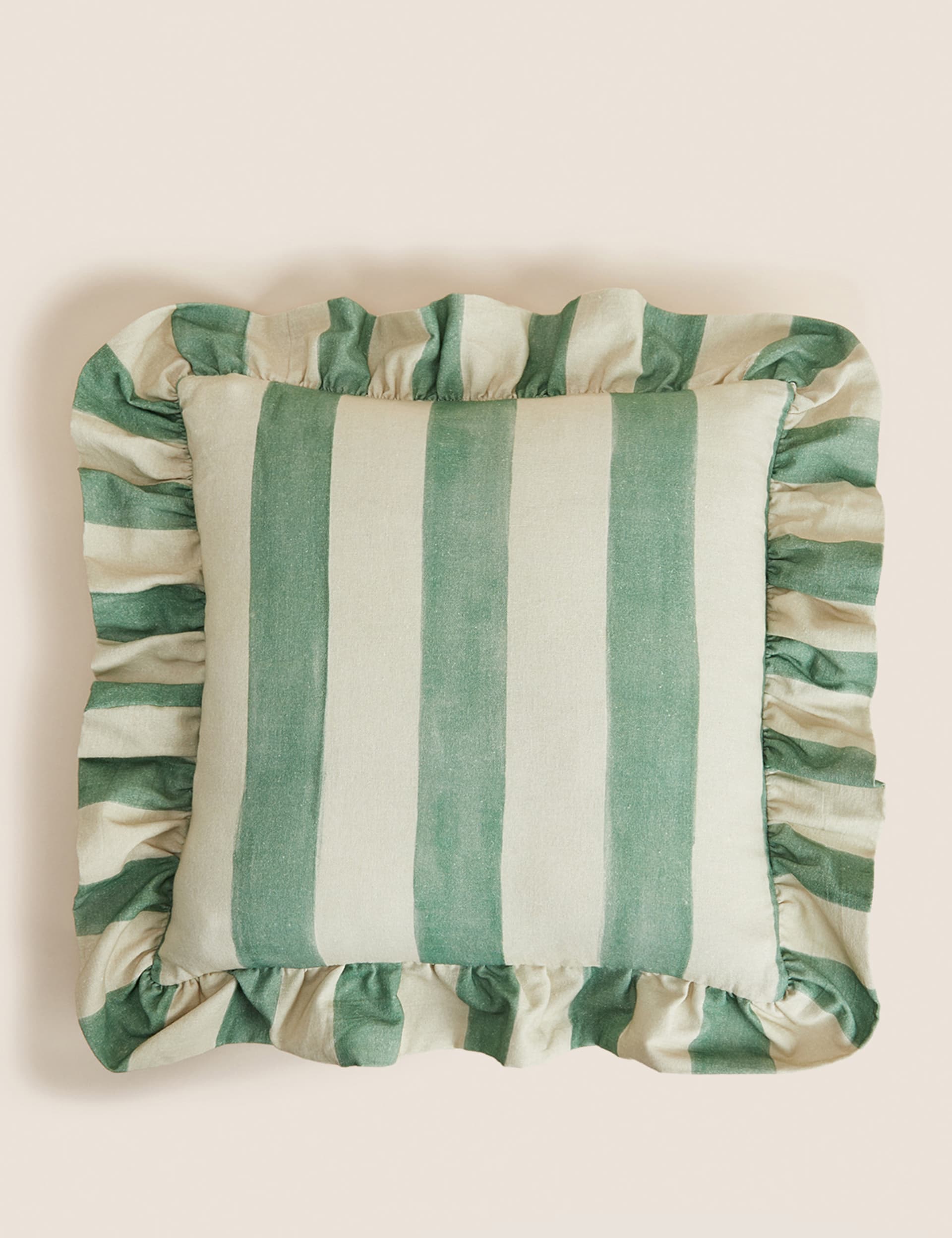
Frills and less solid lines help bring the softness required of biophilia.
Scientists have found that free-flowing shapes in nature, such as the spirals seen in shell formations, are soothing to look at, and as opposed to encouraging cognitive activity, they actually offer you some much-needed respite, making them the perfect accessory for a desk space. You can find many organic shapes like this used in pottery and ceramics — place a shell-shaped vase next to your screen in your home office, alongside a pleasing, symmetrically shaped succulent when you need to take a visual breather.
It is recommended that people take regular ‘micro-breaks’ from their screens, lasting anywhere between 30 seconds to 5 minutes, as often as every 10 minutes. This mini visual refreshment from your screen or task can improve your ability to concentrate, reduce workplace stress, and even help you avoid common desk-related injuries.
Connection
Last but by absolutely no means least, the commonality that ties all of these elements together in biophilic interior design is connection. Not just the connection to nature and the natural world, but building a deeper connection to our environment as a whole and giving our homes a true sense of place grounded in their surroundings.
The connection to our geographical location is also important, whether you're bringing in that connection through your use of materials such as a local stone or through something as simple as seasonal cut flowers or local produce.
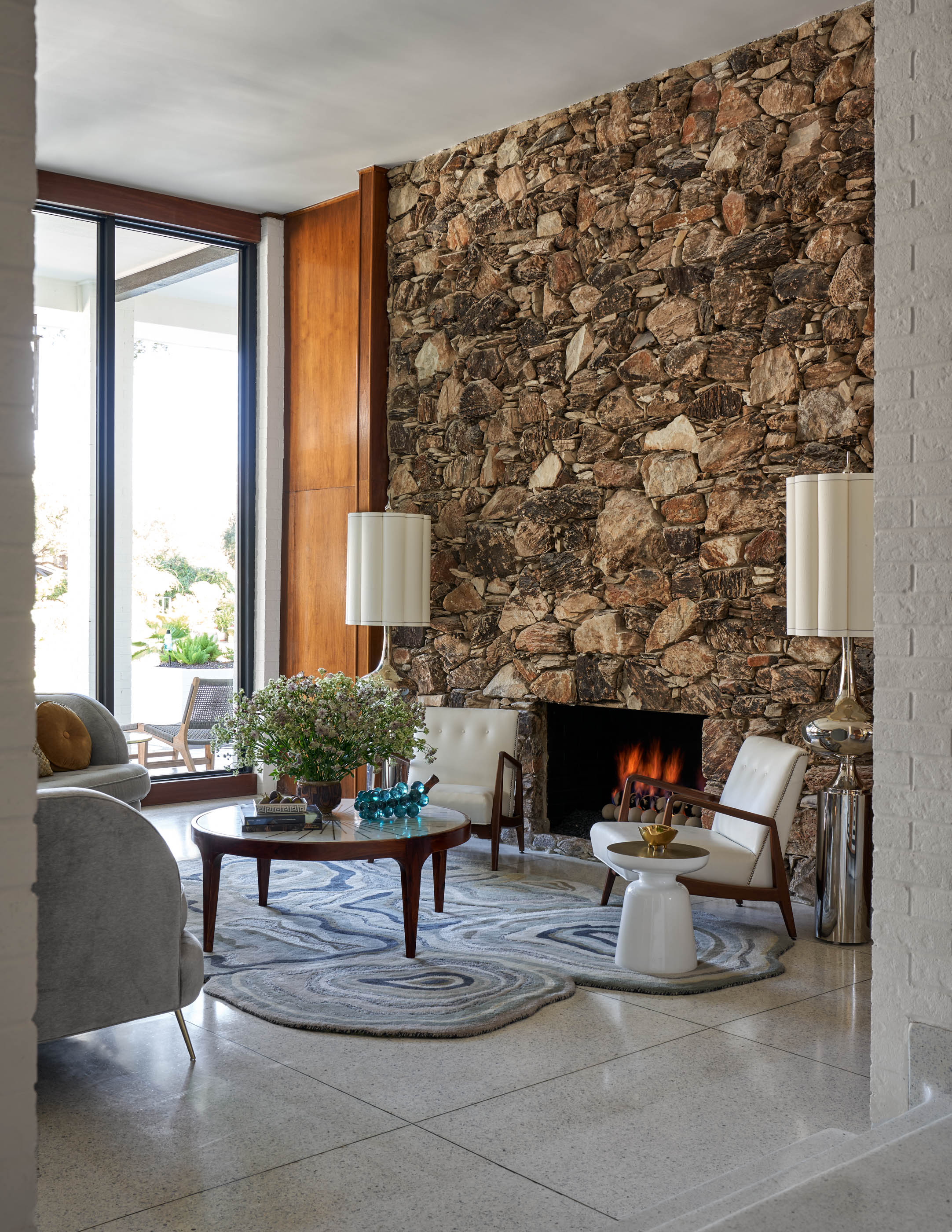
Using stone local to your home brings a direct connection to the sense of space.
You can even bring in a cultural connection through a piece of art from a local painter or a basket made by a local artisan. Your heritage is also something to be celebrated when curating your home. You could incorporate this through the introduction of a family heirloom or maybe a trinket box collected on your travels.
Layering all of these deeper connections to your surroundings and background will avoid you ending up with a generic cookie-cutter scheme as seen in countless other spaces on social media and make your home feel unique to you and your family's story.
Ultimately, a thoughtfully designed biophilic interior cultivates a sense of sanctuary, connection and well-being, ensuring that every individual within the home feels nurtured and supported by their surroundings. That’s why it should be at the very forefront of every room design and not an afterthought.
I hope that you find this article a useful tool for bringing some of nature's magic into your home. If you would like to learn even more about biophilic interior design, I’ve written a book called ‘At Home with Nature’ available to buy now from Happy Press.

Marianna Popejoy is an interior designer specializing in biophilic design. She’s worked on numerous projects from outdoor bathrooms and garden layouts, to jungle-inspired interiors. Her work and home have been featured globally by Architectural Digest and Apartment Therapy and she is currently in the process of writing a book aimed at helping people make realistic, achievable changes to their homes by incorporating elements from nature.
-
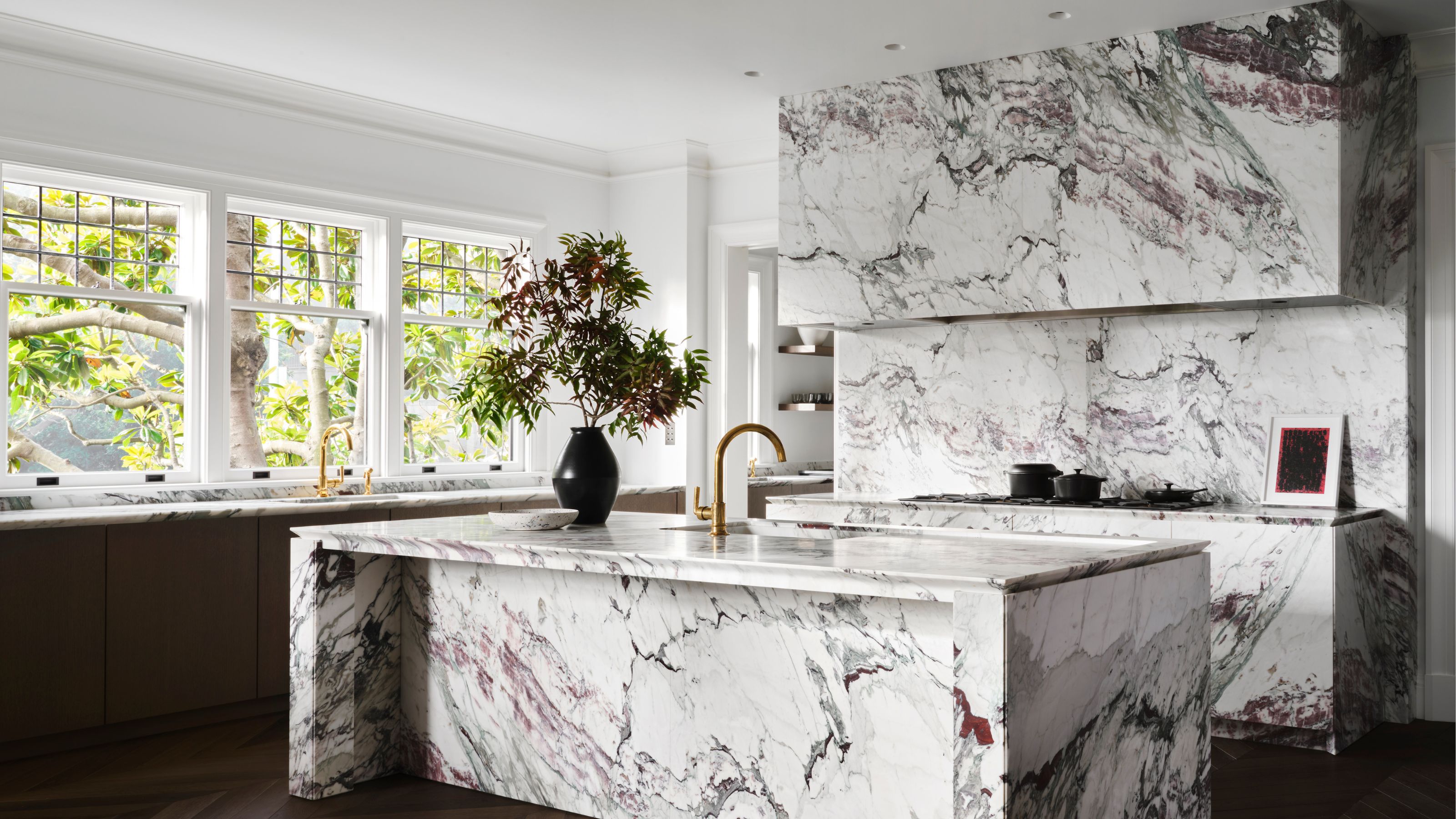 5 Kitchen Stone Trends We’ll See in 2025 — Experts Highlight the Show-Stopping Finishes Taking Center Stage
5 Kitchen Stone Trends We’ll See in 2025 — Experts Highlight the Show-Stopping Finishes Taking Center StageLet’s be honest: there’s nothing more lasting and versatile for kitchen surfaces than stone. These are the timeless choices you should make in 2025
By Aditi Sharma
-
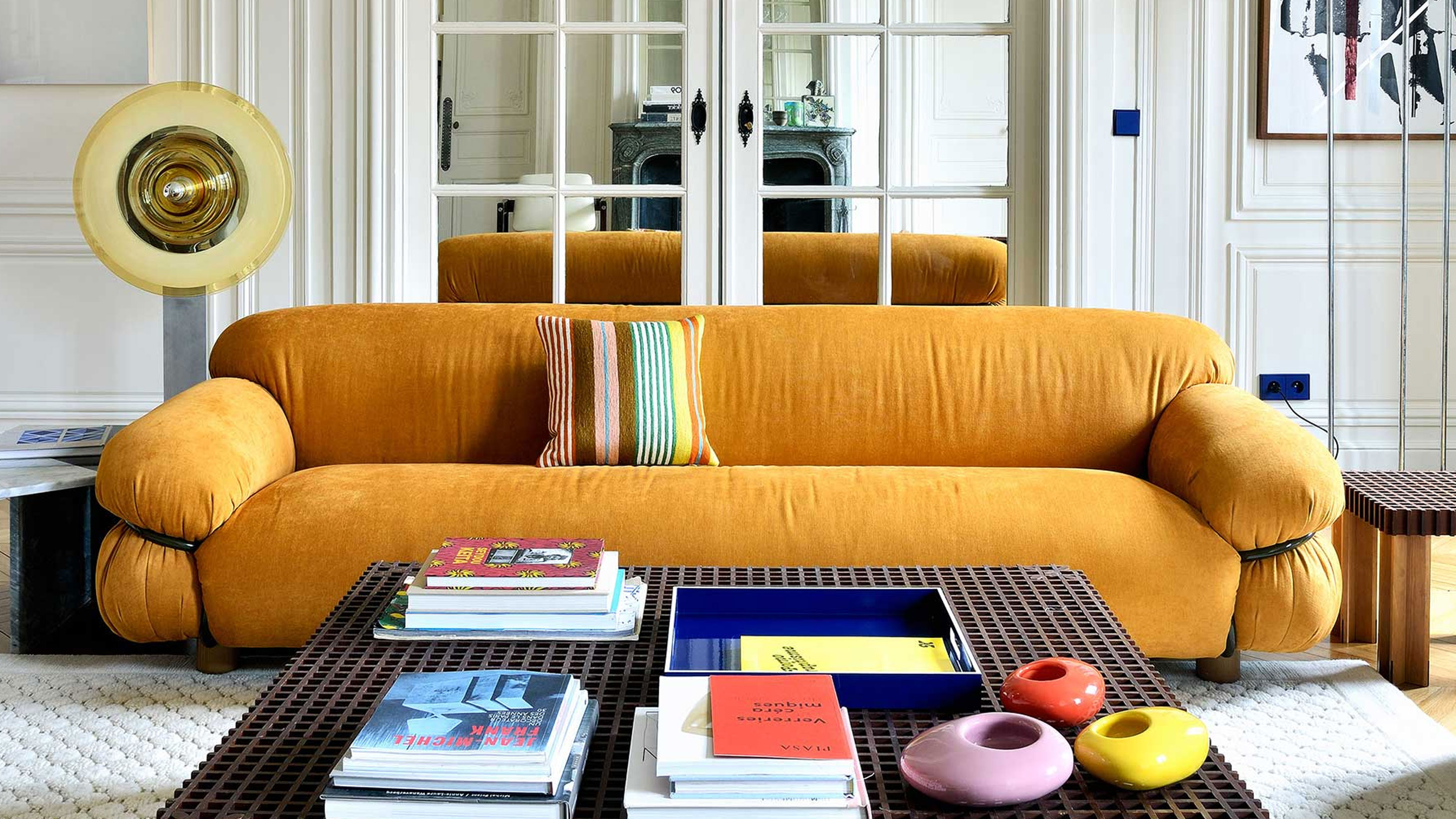 What Does the Color Yellow Mean in Interior Design? A Color and Design Psychology Expert Explains
What Does the Color Yellow Mean in Interior Design? A Color and Design Psychology Expert ExplainsWhether you love or hate it, yellow always seems to elicit a strong reaction from people — here, we explain why
By Karen Haller
